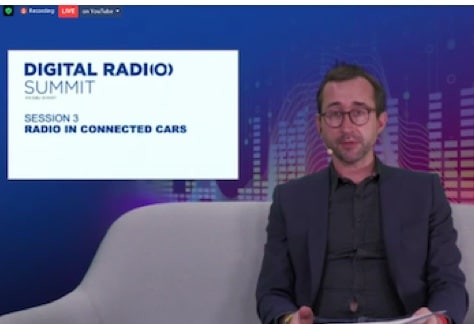GENEVA — The European Broadcasting Union’s Digital Radio Summit in 2020 was probably the last worldwide radio event deployed before the global pandemic wiped-off the possibility of hosting large events.
One year later, the EBU successfully reshaped the DRS format to ensure radio professionals and stakeholders from around the world could attend the annual rendezvous and discuss trendsetting topics as well as lessons learned on radio’s future.
For the first time ever in a fully virtualized format, the DRS 2021 was on-air from Geneva Feb. 17, with a clear accent on the future.
Innovation Is Key
“Radio will continue to be successful only if we continue to innovate,” was the welcome Antonio Arcidiacono, EBU director of technology and innovation, addressed to the audience. “Many of the new trends in radio are linked to the ability to store information locally, making possible the seamless combination of live, push multicast, and unicast content without knowing where it’s coming from.”
He emphasized how the emergence of the Clubhouse app is evidence of the growth of social experiences, eventually leading to further flavors of linear broadcast blended with collective experiences that listeners can select from. Object-oriented production will be a key enabler here, thus requiring a massive shift in radio creatives and producers ways of conceiving radio content and formats.
“Cars are a very old way of distributing radio but a very new category of internet enabled devices” said Elisha Sessions, the new (interim) chair of the EBU Connected Cars and Devices group, introducing the Radio in connected cars session.
Android Automotive
Last autumn, the United States-based National Association of Broadcasters’ Pilot project began studying the proper broadcast received control in the Android Automotive operating system with a global group of broadcasters and others.
Its goal is to drive Google to build support into the open-source platform so that the functionality is available to all developers. Android Automotive is projected to be in 36 million vehicles in 2030.
Jaime Chaux, head of digital at Commercial Radio Australia (CRA) warned how “the FM chipset in mobile phones is a cautionary tale: the lack of a global voice and message meant it was just too complex for the manufacturers to integrate it. We need to avoid that for broadcast radio in Android Automotive.”
Joe d’Angelo, senior vice president, digital platforms at Xperi corp. remarked: “If we don’t get this right, it’ll make the path to a tuner-less radio much easier for audio makers to take.”
He noted the industry is now speaking with one clear voice to Google “and we’ve been able to get engagement from them. If this project is successful, it becomes the de facto open source solution for broadcast radio around the world.”

